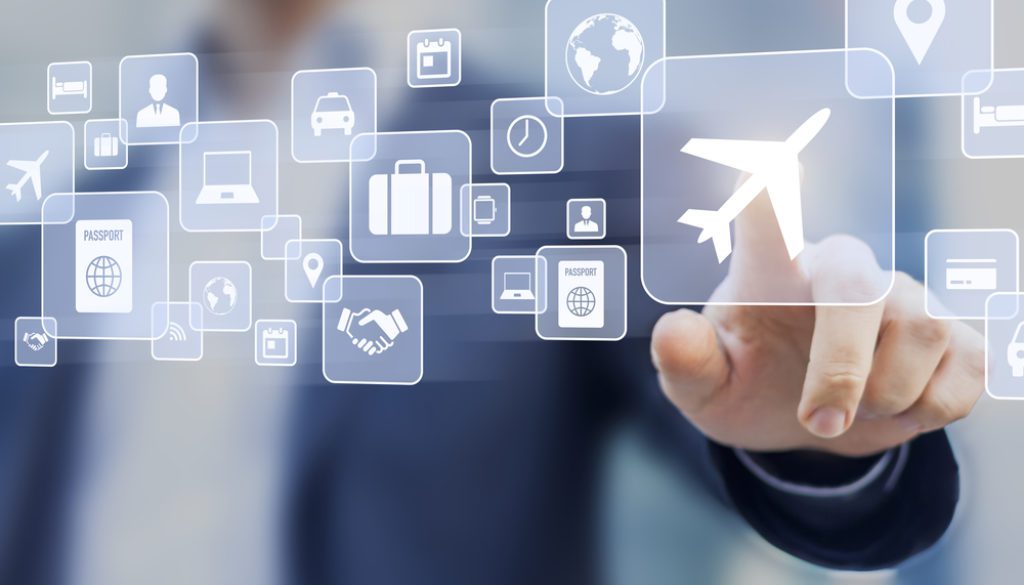Protéger la sécurité des employés pendant les voyages d’affaires
When employees travel in any capacity, they should feel that their employers hold their safety as a top priority. Many things can compromise an employee’s safety, such as traffic accidents, nonviolent crime and severe weather events.
Careful planning and preparation ensure that they have the proper resources to stay safe no matter where or when employees are traveling.
Of course, travel safety doesn’t start when an employee gets on a flight or starts their trip. It starts in the office by building a culture of safety and preparedness. Employees should feel safe when they are on the job, even if they have to travel to do so.
Businesses of all sizes and in all industries can utilize corporate safety plans to ensure employees, travel managers, crisis managers and other key stakeholders are on the same page. Failure to communicate continues to be an issue with employee travel safety, but implementing a strong plan of action can prevent the risks that come from miscommunication.
Benefits of an employee travel safety plan
Business travel is still required for many employees. For decades, it has been a great way to boost professional development, close important deals and offer opportunities to network and grow. However, when safety is left to the wayside and trips are poorly planned, what was once an exciting travel experience quickly begins to comprise safety.
Negative experiences with travel can impact an employee’s outlook on their job and the company they work for.
With concerns such as pickpocketing and protecting employees’ health during a pandemic, businesses have a duty of care to provide their employees with the necessary resources for a safe and successful trip.
Preparing for business travel can enhance safety. If employees have not previously traveled to the destination, research can help them stay safe. General information on their location, keeping passports and other forms of identification safe and safeguarding their finances should be a top concern for both employers and employees.
It can also build a culture of safety and increase trust. Showing employees that your company is actively investing in their safety goes a long way. When safety is a key pillar in the company culture, employees are empowered to practice it themselves and make safer choices when they are traveling.
Invest in a corporate safety policy
Being prepared means mitigating the risk that employees face while they are traveling. Because employers have a duty of care to their employees while they are traveling, companies must have documentation of their safety policies.
Such a document would include training, procedures, and any additional resources needed to keep safety a top priority. This policy should be reviewed by key stakeholders, especially those overseeing travel risk management.
Additional roles and responsibilities can be assigned with a comprehensive mobile communications platform so that everyone is aware of what they should do should an emergency occur.
Safety policies should include:
- Pre-trip planning
- Safety-related packing guides, specified by location
- Country-specific risk assessments
- Necessary travel documents
- COVID-19 safety protocol
- Customs awareness
- Instructions for finding medical support
- Instructions for transportation safety
- A directory of phone numbers needed during the trip (corporate travel managers, airlines, hotels, rental car agencies, clients, etc.)
Policies should be revisited often to ensure the most accurate information is reflected within the document, making it easier for employees to make the safest choices.
Comprehensive safety training for all traveling employees
Preparing your employees by offering them training gives them an increased level of situational awareness. They are better prepared to make safe choices when impacted by a variety of emergency situations such as severe weather, natural disasters, political instability and even petty crimes like pickpocketing. Proper planning and guidance can safeguard employees if traveling experiences become hazardous.
A lesser-known safety hazard employers should prepare for? Cybercrime, including identity theft, fraud, violating privacy and theft and sale of corporate information. Cybercrimes are a common issue and account for $300 billion of theft of intellectual property and business intelligence every year. Cybercrime is often overlooked but is a safety risk that is easy to fall victim to when traveling with unsecured Wi-Fi. Businesses should continue to prepare their employees for these threats by implementing best practices for working while traveling.
Corporate safety policies and their trainings should also include guidance and resources for reporting issues with assault, kidnapping and sexual harassment. If your company has business travel insurance, training should also inform employees of their coverage and how to use it in an emergency.
Make communication simple
While traveling, managers should have a good grasp of an employee’s travel itinerary. Keep an open channel of communication that is accessible at all times can help employees stay safe.
This is where employees can let managers or relevant parties know when their flights are departing or when they arrive at meetings and can help address any concerns that may arise. A dedicated channel of communication can be a great asset to corporate travelers so they can be more aware of emergency situations such as bad weather, terrorist attacks, political unrest and more.
Businesses should monitor an employee’s travel destination to know whether or not there are any active or potential threats. Monitoring and receiving alerts regarding circumstances or potential risks should continue for the duration of the trip, and the employee(s) should be included in these notifications or communications.
Investing in safety communication tools for corporate travel
The right tools can make a difference in how safe your employees feel on their trips. With the help of a safety monitoring tool, you can help ensure employees stay safe and everyone is “in the know” regarding potential concerns or emergencies.
Two-way communication between travel managers and employees
An employee safety tool that directly integrates into corporate safety resources is a simple solution. Such a system would enable corporate travel managers to compile all resources for each traveler in a secure portal that can be accessed by app or online. Send and receive messages with secure encryption technologies so electronic safety is not an issue.
Rave Mobile Safety’s technology allows employees to enable two-way communications between travel managers and employees. This keeps communications concise and specific without worrying other unaffected employees with company-wide alerts.
Emergency notifications for any area — not just the office
Emergency notifications can be enabled for any location your employees may travel to — not just the corporate headquarters or offices. Employees can also receive geo-targeted alert notifications to get access to emergency help when something goes wrong.
This robust employee safety app can be activated in just two clicks and can keep employees connected — and safe — when they are traveling. Whether on the road or stationed in different cities, Rave Mobile Safety’s technology makes it possible to receive timely alerts.
Access to emergency resources
A mass communications platform can also keep employees informed and up to date with the latest procedures. Emergency managers can upload emergency instructions to their portal, so that if an emergency occurs, employees can view detailed instructions with just the click of a button.
Keep your employees informed no matter where they are when significant events such as natural disasters, severe weather, active assailants, mental health crises, and non-emergency scenarios like power outages and system shutdowns happen.
To learn more about how Rave Mobile Safety can help you protect your traveling employees, please visit: https://www.ravemobilesafety.com/products/rave-guardian/.





